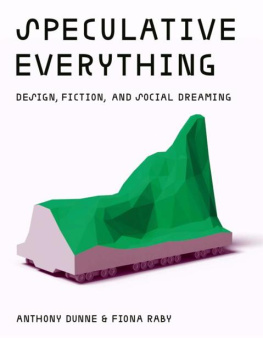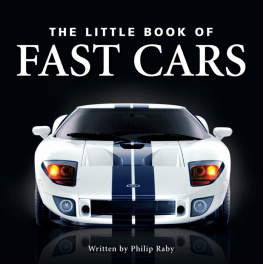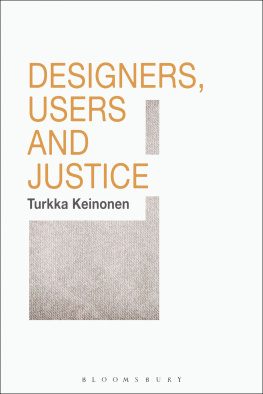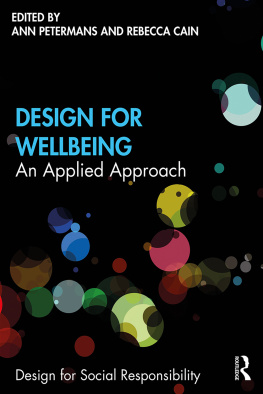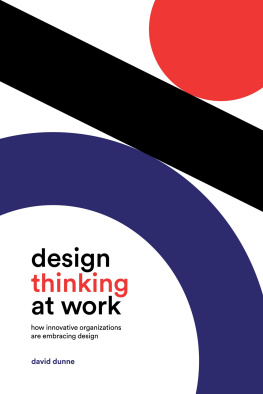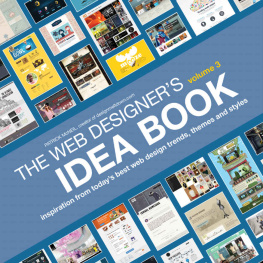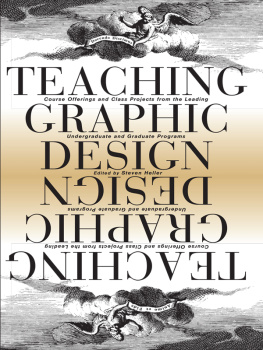DEJ'IGN, FICTION, AND J'OCIAL DREAMING
ANTHONY DUNNE & FIONA RABY



Speculative Everything began as a list we created a few years ago called A/8, a sort of manifesto. In it, we juxtaposed design as it is usually understood with the kind of design we found ourselves doing. B was not intended to replace A but to simply add another dimension, something to compare it to and facilitate discussion. Ideally, C, D, E, and many others would follow.
This book unpacks the B bit of the list, making connections between usually disparate ideas, locating them within an expanded notion of contemporary design practice, and establishing some historical links. It is not a straightforward survey, anthology of essays, or monograph but offers a very specific view of design based on several years of experimentation, teaching, and reflection. We use examples from our own practice, student and graduate work from the Royal College of Art, and other projects from fine art, design, architecture, cinema, and photography. In researching this book we also surveyed literature from futurology, cinematic and literary fiction, political theory, and the philosophy of technology.
The ideas in this book move from a general setting out of what conceptual design is, through its use as a critical medium for exploring the implications of new developments in science and technology, to the aesthetics of crafting speculative designs. It ends by zooming out to explore the idea of "speculative everything" and design as a catalyst for social dreaming.
S peculative Everything is an intentionally eclectic and idiosyncratic journey through an emerging cultural landscape of ideas, ideals, and approaches. We hope designers interested in doing more than making technology easy to use, sexy, and consumable will find this book enjoyable, stimulating and inspiring.
A
Affirmative
Problem solving
Provides answers
Design for production
Design as solution
In the service of industry
Fictional functions
For how the world is
Change the world to suit us
Science fiction
Futures
The "real" real
Narratives of production
Applications
Fun
Innovation
Concept design
Consumer
Makes us buy
Ergonomics
User-friendliness
Process
A/8, Dunne & Raby.
B
Critical
Problem finding
Asks questions
Design for debate
Design as medium
In the service of society
Functional fictions
For how the world could be
Change us to suit the world
Social fiction
Parallel worlds
The "unreal" real
Narratives of consumption
Implications
Humor
Provocation
Conceptual design
Citizen
Makes us think
Rhetoric
Ethics
Authorship
The ideas in this book have taken shape over many years through conversations and exchanges with many people. We would like to thank the following in particular for their support and help throughout the development of this project.
Our teaching activities at the Royal College of Art (RCA) in London are a constant source of inspiration; we are privileged to work with supremely talented students whose projects never cease to challenge and push our own thinking. In Design Products, we would like to thank Platform 3, Durrell Bishop, Onkar Kular, Ron Arad, and Hilary French; in Architecture, ADS4, Gerrard O'Carroll and Nicola Koller; and more recently, the amazingly talented staff and students of the Design Interactions program, particularly James Auger, Noam Toran, Nina Pope, Tom Hulbert, David Muth, Tobie Kerridge, Elio Caccavale, David Benque and Sascha Pohflepp; as well as a very long list of guests who have dropped by and generously shared their ideas and thoughts in lectures and critiques. We are extremely grateful to the RCA for being the sort of place where it is not only possible to develop work and ideas like this but it is also actively encouraged and supported.
We have always believed in the importance of discussing and developing ideas in a broader context than academia alone, and thank in particular Wendy March at Intel and Alex Taylor at Microsoft Research Cambridge for bringing an industry perspective to our research; Paul Freemont and Kirsten Jensen at Imperial College, London, for their support and encouragement in our explorations into synthetic biology and other areas of science; and the many people who have provided opportunities to share our thinking through talks, workshops, and conferences and to benefit from the challenges, questions, and discussions they have sparked. We are also thankful for the generosity and enthusiasm of the people and organizations who have commissioned and exhibited our work making it possible to engage with a wider public audience. In particular, Michael John Gorman at The Science Gallery; Jan Boelen at Z33; Constance Rubin and the Saint - Etienne International Design Biennial; James Peto and Ken Arnold at The Wellcome Trust; Deyan Sudjic, Nina Due, and Alex Newson at the Design Museum in London; and especially Paola Antonelli at the Museum of Modern Art in New York for her inspiring and passionate commitment to making more room in the world for design like this.
Over the last few years we have enjoyed a rich and ongoing exchange of ideas around interactions between design, fiction, science, technology, and futures with a number of people we would like to thank: Bruce Sterling, Cron Catts, Jamer Hunt, David Crowley, Stuart Candy, and Alexandra Midal.
And of course, we are very grateful to Doug Sery, our editor at MIT Press, for taking on this project and his enthusiastic support and encouragement throughout its development. For the smooth and enjoyable process of putting everything together we'd like to thank the brilliant team at the MIT Press for being so patient and accommodating, especially Katie Helke Doshina for steering us through the production process, designer Erin Hasley, and Deborah Cantor-Adams for editing.
We're very grateful to everyone who provided images for the book, and to Elizabeth Glickfeld for her dedicated detective work and picture research as well as Marcia Caines and Akira Suzuki for local picture sourcing. Finally, we'd like to thank Kellenberger-White for their graphic design advice and designing a special typeface for this book.
Dreams are powerful. They are repositories of our desire. They animate the entertainment industry and drive consumption. They can blind people to reality and provide cover for political horror. But they can also inspire us to imagine that things could be radically different than they are today, and then believe we can progress toward that imaginary world.'
It is hard to say what today's dreams are; it seems they have been downgraded to hopes-hope that we will not allow ourselves to become extinct, hope that we can feed the starving, hope that there will be room for us all on this tiny planet. There are no more visions. We don't know how to fix the planet and ensure our survival. We are just hopeful.

